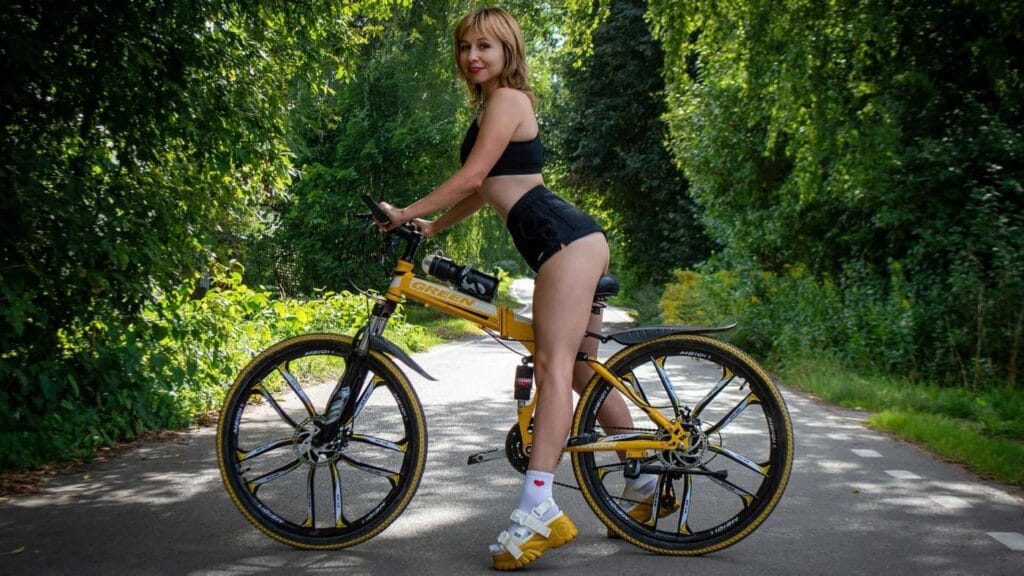
In recent years, Germany’s urban landscapes have undergone a remarkable transformation. Where once cars dominated the streets, you’ll now find sleek e-scooters weaving through traffic and stylish e-bikes cruising along dedicated lanes. This shift toward micro-mobility solutions isn’t just a passing trend—it’s a response to increasing urbanization, environmental concerns, and the quest for more efficient transportation options.
Whether you’re a tech enthusiast, a daily commuter, or simply curious about sustainable travel options, understanding the intricacies of e-mobility in Germany can enhance your experience and keep you safe on the road. Let’s dive into everything you need to know about navigating the e-mobility revolution in German cities.
The Legal Landscape: Rules and Regulations
Germany’s approach to regulating e-mobility strikes a balance between encouraging adoption and ensuring public safety. If you’re planning to use these vehicles, you need to be aware of the specific regulations.
E-Scooter Regulations
E-scooters (or “Elektrokleinstfahrzeuge”) became officially legal on German roads in June 2019, but with clear parameters:
- You must be at least 14 years old to ride
- Maximum speed is limited to 20 km/h
- Insurance is mandatory (indicated by a small insurance plate attached to your scooter)
- E-scooters must use bicycle lanes when available; if none exist, you must use the road (sidewalk riding is prohibited)
- Riding while intoxicated carries the same penalties as driving a car under the influence
- Your e-scooter must have functional front and rear lights, reflectors, and two independent brakes
Interestingly, while helmets are strongly recommended for safety, they aren’t legally required for e-scooter riders. Still, considering the vulnerability of riders and the frequent accidents reported since their introduction, wearing a helmet is a wise choice.
E-Bike Classifications and Rules
E-bikes in Germany fall into three main categories, each with different regulations:
Pedelecs (up to 25 km/h assistance) These are the most common type, offering motor assistance only when you pedal, with the assistance cutting out at 25 km/h. Legally, they’re treated just like conventional bicycles:
- No minimum age requirement
- No license needed
- No insurance required
- No helmet legally required (though again, highly recommended)
- You can use all bicycle infrastructure
S-Pedelecs (up to 45 km/h assistance) These more powerful e-bikes are classified differently:
- Minimum age of 16
- Require an AM class driver’s license
- Must be insured and registered
- Helmet is mandatory
- Must use roads rather than bicycle paths, except where specifically permitted
E-Bikes with throttle control These function more like mopeds, providing power without pedaling:
- Require registration and insurance
- Riders need at least an AM class license
- Cannot use bicycle infrastructure
Safety First: Helmets and Protective Gear
While the law doesn’t mandate helmets for standard pedelecs or e-scooters, the safety benefits cannot be overstated. Head injuries account for a significant percentage of serious e-mobility accidents. When traveling at 20-25 km/h with minimal protection, even a minor collision can have serious consequences.
For optimal protection, consider:
- A well-fitting helmet designed for cycling (standard bicycle helmets are suitable for e-scooters and regular pedelecs)
- Reflective clothing, especially when riding in low-light conditions
- Gloves to improve grip and protect your hands in case of falls
- For S-pedelec users, a motorcycle-grade helmet meeting ECE standards is legally required
Remember that while apps and technology get much of the attention, your safety equipment is your most important tech investment.
Battery Care and Maintenance: Extending Your Range

The heart of any e-mobility device is its battery. Proper care not only extends its lifespan but also ensures optimal performance when you need it most.
Optimizing Battery Life
Modern e-bikes and e-scooters typically use lithium-ion batteries, which benefit from specific handling:
- Avoid complete discharges when possible; lithium-ion batteries prefer partial discharge cycles
- Store your device at around 40-60% charge if you won’t be using it for extended periods
- Keep batteries away from extreme temperatures; cold weather particularly reduces range dramatically
- When charging, allow the battery to cool down first if you’ve just finished a ride
- Use only the manufacturer’s recommended charger to avoid damaging the battery management system
- Most batteries perform best when regularly used—a stored e-bike or scooter should ideally be ridden and charged at least once a month
A well-maintained battery on a quality e-bike can last 500-1000 complete charge cycles before significant capacity loss occurs. In practical terms, this translates to several years of regular use before replacement becomes necessary.
Winter Considerations
Germany’s cold winters present particular challenges for e-mobility users. Battery efficiency can drop by 30-50% in temperatures approaching freezing. If you’re a year-round rider, consider:
- Storing your device indoors when not in use
- Removing the battery to bring it to room temperature before your journey
- Insulating the battery compartment (some specialized covers are available)
- Adjusting your route expectations—your normal range may be significantly reduced
Essential Apps for the Connected Rider
The e-mobility experience is enhanced significantly by smartphone integration. Several apps have emerged as particularly valuable for German users:
Navigation and Route Planning
Komoot: Beyond basic navigation, Komoot excels at finding bicycle-friendly routes throughout Germany, with detailed information about surface types and elevation profiles—crucial information for range planning on e-bikes.
Bike Citizens: Particularly strong in major German cities, this app focuses on urban cycling routes and includes specific features for e-bike users, such as range estimations based on battery capacity.
Deutsche Bahn’s DB Navigator: While primarily for train travel, this app is invaluable for multi-modal journeys, helping you identify where you can take your e-bike on trains (important for longer trips or commutes).
Sharing Services
TIER, Lime, and VOI: These major e-scooter sharing platforms operate in most German cities. Each has its own app showing available scooters, pricing, and parking zones. TIER also offers e-bikes in some locations.
Call a Bike and nextbike: Germany’s leading bike-sharing services both offer e-bikes in their fleets across multiple cities.
SHARE NOW: In addition to cars, this service has begun integrating e-mobility options in select German markets.
Most sharing apps now include features showing low-emission zones and designated parking areas—particularly important as many German cities have implemented strict regulations about where shared e-scooters can be parked.
Tech Features Worth the Investment
When purchasing your own e-mobility device, certain technological features provide significant benefits for daily use in German urban environments:
Security Systems
Theft is unfortunately common, especially for high-value e-bikes. Consider:
- GPS tracking systems, which are becoming more affordable and compact
- Smart locks that integrate with your smartphone and provide theft alerts
- Frame locks with additional chain extensions for more secure parking
- Removable batteries and displays, which not only deter theft but also allow for convenient charging
Lighting and Visibility
German law requires front and rear lighting on all e-mobility devices, but going beyond the minimum requirements improves safety:
- Integrated lighting systems powered by the main battery ensure you’re never caught without lights
- Daytime running lights significantly increase visibility even in daylight
- Side lighting or wheel lights provide additional visibility from perpendicular angles
- Automatic lighting that activates based on ambient light conditions removes the human error factor
Smart Features
The latest generation of e-bikes and even some premium e-scooters offer sophisticated connectivity:
- Bluetooth connectivity with smartphone apps for detailed ride statistics
- Integrated displays showing real-time range estimates based on terrain and riding style
- Automatic motor adjustment based on heart rate (on more advanced e-bikes)
- Over-the-air updates improving motor efficiency and performance over time
Commuter Tips and Tricks
For those using e-mobility devices for daily commuting in Germany, a few practical considerations can improve your experience:
Workplace Integration
More German employers are supporting e-mobility commuting by providing:
- Secure parking areas specifically for e-bikes and e-scooters
- Charging stations at workplaces
- Tax benefits for e-bike leasing through employer programs
If your workplace doesn’t yet offer these amenities, it’s worth discussing with management—many companies are receptive to sustainability initiatives.
Weather Adaptation
Germany’s varied climate demands flexibility:
- Fenders are essential for rainy conditions
- Consider panniers or waterproof bags rather than backpacks to avoid a sweaty back
- For e-bikes, winter tires with better grip become important during colder months
- Rain covers for batteries and displays provide additional protection against moisture
Multi-Modal Commuting
One of the strengths of e-mobility is integration with public transport:
- Standard pedelecs can be taken on most regional trains with a bicycle ticket
- Folding e-scooters are generally permitted on public transport without additional fees
- Some cities have developed specialized parking facilities at transit hubs specifically for e-mobility devices
Looking Forward: The Future of German E-Mobility
As Germany continues its push toward climate neutrality, e-mobility will play an increasingly important role. Infrastructure is steadily improving, with dedicated lanes, specialized traffic signals, and charging stations becoming more common in urban planning.
Regulatory frameworks continue to evolve, with potential changes including standardized parking zones for e-scooters, expanded bicycle highways in metropolitan areas, and possibly revised helmet requirements as usage increases.
The technology itself is advancing rapidly. We’re seeing increased range, faster charging, more integration with smart city infrastructure, and improved all-weather capabilities in newer models.
For the tech-savvy commuter in Germany, e-mobility represents not just a practical transportation solution, but participation in a significant urban transformation. By understanding the legal requirements, optimizing your device’s performance, utilizing helpful apps, and investing in the right features, you can make the most of this revolution in personal transportation.
Whether you’re zipping through Berlin on an e-scooter or cruising the bicycle highways of the Ruhr region on a pedelec, you’re experiencing the future of urban mobility—clean, efficient, and connected.











